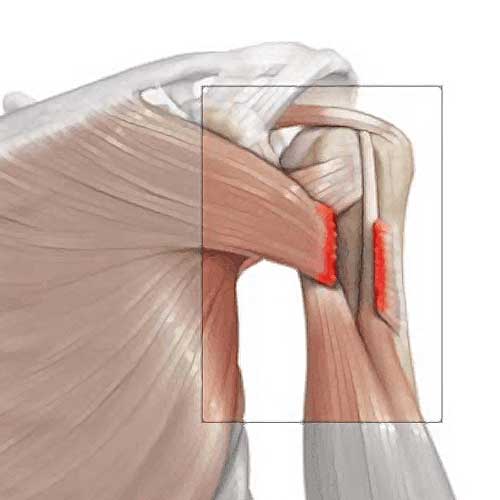
A pectoralis major tear refers to a tear or rupture of the pectoralis major muscle, which is a large muscle located in the chest region. The pectoralis major muscle is responsible for various movements of the shoulder and arm, including flexion, adduction, and internal rotation.
Pectoralis major tears most commonly occur during activities that involve heavy weightlifting, forceful movements, or direct trauma to the chest. These injuries are more frequently seen in athletes engaged in sports such as weightlifting, football, rugby, or martial arts.
There are two main types of pectoralis major tears:
Partial Tear: A partial tear involves damage to a portion of the muscle fibres. This may result in pain, swelling, weakness, and limited range of motion in the affected shoulder and arm.
Complete Tear: A complete tear refers to a full rupture of the pectoralis major muscle, where the muscle is completely separated from its attachment to the upper arm bone (humerus). This type of tear typically causes significant pain, swelling, bruising, and a visible deformity or “popping” sensation in the chest or armpit area. It can also lead to weakness and functional limitations in the shoulder and arm.
Symptoms
The most common presentation of a pec major tear is a sudden pop that is felt at the front of the shoulder with pain, swelling and bruising. This usually occurs during resisted internal rotation, for example while closing a heavy door or during a footy tackle. Some other symptoms may include:
A visible Gap
The injured area may be tender to the touch, and there may be a noticeable gap or indentation in the chest wall where the muscle has torn.
Deformity
As the pec major provides shape to your anterior (front) chest, a pec major tear may cause visible deformity, where the contour of your chest is lost, especially when comparing to your uninjured side.
Limited Range of Motion & Weakness
You may experience a decreased range of motion in the shoulder and arm, particularly when trying to move the arm across the chest.

Pectoralis Major
The pectoralis major is a large muscle of the anterior chest. It gives shape to the anterior contour of your shoulder.

Pec Major Tear
Tearing of the pectoralis major can lead to bruising, swelling and loss of the contour of your anterior shoulder.

Pec Major Repair
Repair of pectoralis major tear involves re-attaching the tendon back to its original footprint.
Pectoralis Major Tear Treatment
Surgical intervention is often recommended for complete tears. Surgery aims to reattach the torn muscle to its anatomical insertion point on the humerus. Following surgery, a period of immobilisation and rehabilitation is typically required to restore muscle strength and function.
